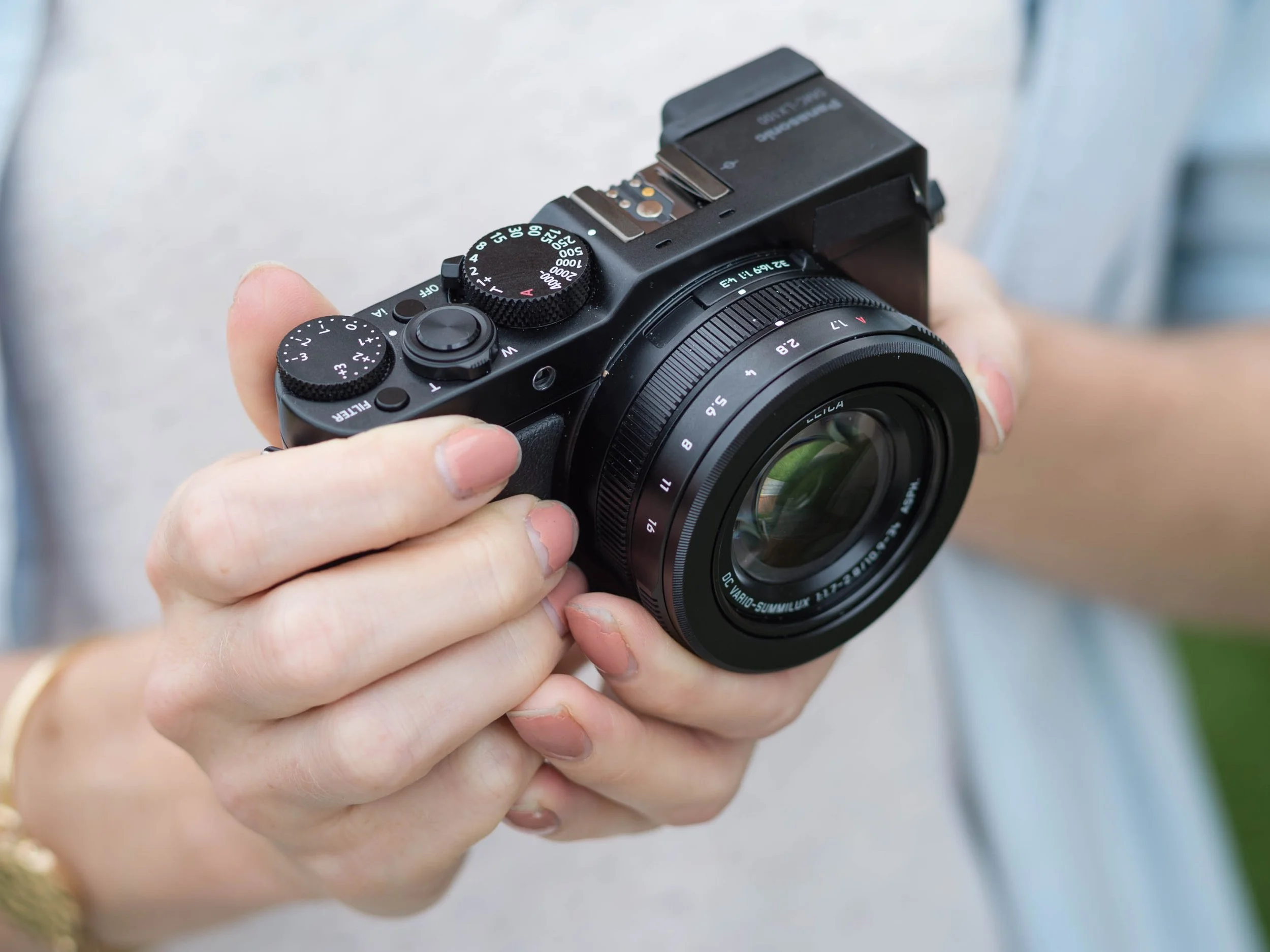Lumix LX100II
For what it is, this camera is so good, we’ve both settled on it as the grab-n-go scouting camera.
Dan has raved several times in blog posts about the amazing images we get from our point and shoot cameras. That name actually does a disservice to the LUMIX LX100 II cameras, but that’s what it is. Cameras you can take with you anywhere. You might ask, “Why are they so good.”
As mentioned in other camera posts, it’s really all about the optics and the sensor. Here, the optics are designed by Leica. That’s pretty hard to beat in the world of optics. And while the sensors are micro 4/3 sensors and somewhat smaller than our Fujifilm APSC sensors, the LUMIX sensor is huge compared to older point and shoot cameras, and even the main competition, which hovers around 1” sensors, which are significantly smaller than m4/3. We’ve tried them and the step up in quality is significant. Plus, there’s a certain Leica look from the files, particularly with certain colors. There was a reason Dan so enjoyed a previous LUMIX/Leica point and shoot, though it didn’t deliver the quality we get from the LX100 II (it had a much smaller sensor).
Not a bad image from such a small camera! And Dan took it hand-held on a scouting trip.
Beyond image quality, which itself is enough of a reason to get this camera, is how it operates. Its functionality. It’s a camera, not a computer! It has all of the features that drew us to Fujifilm cameras. It has an aperture ring! And a focus ring (that can be set for other functions like ISO if you want)! It has a shutter speed dial! It even has something not found on the Fujis - you can change the aspect ratio of the images by sliding a lever on the top of the lens mount! One can go from a 4:3 aspect ratio to a 1:1 square with a flip of a switch. Or 16:9 panoramic. And like Dan’s Fujifilm X100, there is a switch on the side of the camera that can put it into macro-mode as well as into manual focusing mode.
There’s no need to go diving into a menu to make most setting changes (and neither of us tend to change our ISO much), so we don’t need to re-learn the camera whenever we’ve not used it for a few months. This is a camera you can pick up and use, especially if you’re familiar with Fujifilm cameras (or SLRs from the 1970s and ‘80s).
Like other point and shoot cameras, it has a zoom lens. This one mirrors the traditional 24mm-70mm in a full-frame equivalent. That’s the range we make most of our images at anyway, so it’s near perfect for us. And it can do it at f1.7 in case we really want a shallow depth of field!
The trade off for all of this - 4/3 sensor, manual controls everywhere, etc. - is in size. It’s pocketable . . . if you have a large pocket. Or a photography vest. Maybe call it coat or carrying bag pocketable. It’s not what you would call bulky, but it won’t just fit into a shirt pocket. For us that’s not a deal breaker, especially given we are wearing photography vests when I’m out and about photographing, regardless of the weather. If needed, we know we can make a wonderful image with this camera. And having that confidence matters to us, because you never know when you’ll see an image that won’t be there in the few minutes it might take to go back and get your “real camera.
Much like Dan’s older, but larger sensor, X100, if you use this camera within its limitations, it will give you lovely results. Just pray you don’t have too great a contest range in your image, have to bump the ISO up too much or that you have to print the image large.
Otherwise, it’s the perfect pick it up and go scouting camera!
We couldn’t agree more, particularly about the physical camera controls . . . what a relief using this camera is after trying to use the Sony point-and-shoot cameras!





